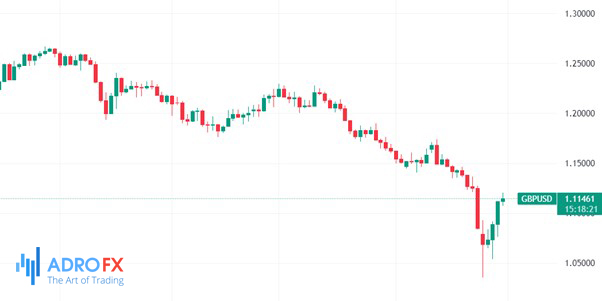Bank of England Saves the Day | Daily Market Analysis

Key events:
- Eurozone — CPI (YoY) (Sep)
- USA — Core PCE Price Index (MoM) (Aug)
After the new British government announced its spending plans, it led to a sharp collapse of the country's national currency and an equally sharp rise in long-term bond yields. To stabilize the crumbling debt market, the Bank of England now plans to buy as many government bonds as necessary.
The surge in long-term government bond yields came just after the release of a new plan to stimulate the slowing economy by cutting taxes and removing restrictions on bank bonuses and subsidies on household energy bills. Debt funds of 45 billion pounds ($48.3 billion) will be needed to finance the plan.
These measures undermined investor confidence in the stability of the country's economy and plunged the British pound to a record low against the dollar. Also, the yield on 10-year bonds climbed to a 14-year high of 4.6%.

The risk to financial stability has risen because a weaker pound makes it almost unprofitable to import goods — they become too expensive — while higher bond yields increase the cost of government borrowing. At the same time, the flow of credit to the real economy will fall.
Under such circumstances, the Bank of England had no other solution but to announce temporary targeted purchases of long-term government bonds for a period of about 2 weeks, from September 28 to October 14. The bank said it would hold them on any scale necessary to stabilize the market, and the government would cover the cost.
As a result of the regulator's actions, the yield on British ten-year notes fell from 4.6% to 4.0% per annum. At the maximum point, the yield decreased almost by 15% (!). At the same time, the British pound strengthened rather seriously (almost by 2%). Of course, the enthusiasm on the markets immediately began to rise: the debt crisis, about which analysts have so long warned, is canceled. At least for now.

The Bank of England will not rush to curtail its purchases and should postpone the start of its quantitative easing program until October 31, within the framework of which it is selling government bonds to prevent the economy from overheating.
The bank's goal, for now, remains unchanged - to cut its bonds by $80 billion over the next 12 months.
It should be noted that QE is designed to stimulate the economy by injecting liquidity, where money is actually printed to buy bonds on the open market, increasing the total money supply and giving people more cash to spend and invest.
The Bank of England's intervention is designed to ensure that short-term bond purchases won't lead to a spike in inflation, but they will be enough to calm investors' nerves.
It will not be easy for the bank to move in this direction, because one program is clearly expansionary and the other is restrictive. Even the International Monetary Fund has warned the country against implementing decisive spending plans for the same reason.









